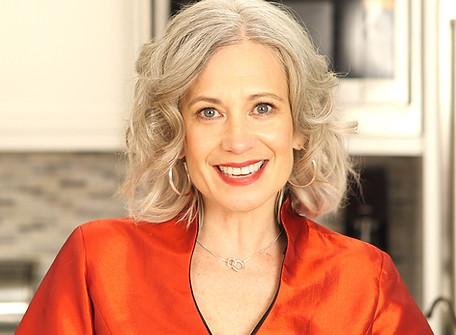I met VegTech™ Invest CEO, Elysabeth Alfano at the 2023 ESG for Impact Conference, where she made a strong case for investing in food and agricultural systems innovation as a method for reducing greenhouse gas emissions and other environmental harms. I wanted to learn more about the specific innovative companies she thinks are worth investing in, and so I interviewed her and VegTech™ Invest Chief Investment Officer, Dr. Sasha Goodman about these themes. The interview follows.
Tom Konrad Ph.D., CFA –

Editor
Q: Thanks for taking the time to speak with me. To begin with, can you tell us what VegTech™ is and why investors might want to invest in the theme.
Ms. Alfano: VegTech™ is the innovation that is driving the transformation of sustainable food systems, moving away from inefficient and unsustainable animal proteins and replacing them with nutritious alternatives that are significantly less damaging and, at scale, less costly. Given the problem-solving nature of these innovations, this theme reflects an anticipated megatrend in which all consumers adopt – to varying degrees – proteins that are more nutritious, more prolific, take less time, require fewer inputs and create less damage.
This represents a significant opportunity to make money with this trend, as well as potentially bring down the carbon footprint of one’s portfolio by investing in this theme.
Q: What percentage of world GHG emissions come from the food system and what is the potential for reducing these emissions by 2030 and by 2050?
Ms. Alfano: Conservative estimates state that 16.5% of the world GHG emissions come from animals as food. More significantly, 32% of the world’s global methane emissions come from grazing and growing crops to feed animals. Life cycle analysis shows the delta of impact for a plant-based burger is 99% less water, 93% less land, 90% fewer greenhouse gas emissions emitted and 46% less energy used.
Impact by 2030 and 2050 will depend on how much capital is driven (through the public markets, but also governments) to VegTech™ innovations. According to the Boston Consulting Group, investing in VegTech/Alternative Proteins is 3x-40x more impactful at reducing GHG emissions than investing in alt energy, electric vehicles or alternative building materials. This is primarily because the CapEx needed to build out the VegTech™ infrastructure is much lower than the other sectors, so adoption and impact can happen faster.
Q: What are the current options for public market investors to access this theme?
Our research shows that there is only one option for this theme in the public markets: EATV ETF (NYSEArca:EATV).
Q: I note that EATV is an actively managed ETF. Why did you choose an active as opposed to a passive, more index-based approach?
Ms. Alfano: Markets are dynamic and this sector is dynamic, with anticipated IPOs for novel technology companies. Therefore, we thought it best to have the option to make decisions without restraint. Still, the ETF trades quarterly and, thus, is mindful and disciplined regarding turnover.
Lastly, it is rare to see an ETF led by industry sector experts, but both Stanford educated Dr. Sasha Goodman, Portfolio Manager of EATV, and Elysabeth Alfano, CEO of VegTech™ Invest, are food systems transformation experts who understand and are involved in the nuances of the shifting global food supply system, as well as being venture and private investors.

Q: How do you decide if a company that’s involved in the food system belongs in the VegTech™ theme? How many companies are currently in your investing universe?
Dr. Goodman: We continually scan the landscape for plant-based companies, starting with a pool of over 100 potential candidates, as listed in the VegTech non-tracking index EATVi. Companies are selected based on rigorous quantitative and qualitative analysis, including in-depth revenue research. We sample around 50 products per company, aligning them with revenue segments to ensure they meet our prospectus criteria, ultimately choosing those best positioned to leverage market trends in sustainable food systems transformation. These are companies that are innovating for efficiencies and disruption and fit into our categories, which notably include business-to-business players, such as flavor technology and ingredients producers and synthetic biology specialists, in addition to the plant-based consumer goods.
Q: How has the ETF performed in comparison to EATVi?
As of 10/31/23, the actively managed and non-tracking ETF, EATV, surpassed the EATVi index across the 1, 3, 6, and 9 month cumulative periods, and the 1 year average annualized periods.
Q: What technologies or methods for transforming agriculture are you most excited about?
Ms. Alfano: We are most excited about both fermentation and cultivated meat. Cultivated meat, growing meat from cells, is still 6-8 years away from scaling, so I will discuss fermentation here. We have been fermenting foods for hundreds of years: kimchi, vegetables, tea, bread, and beer are a few examples. It makes good sense that we would now ferment proteins.
Companies like Gingko Bioworks (NYSE: DNA) engages in partnerships and collaborations where they provide their services and expertise to help other companies develop and produce bio-based products. This is often done through the use of Ginkgo’s platform. Lamb Weston is selling potatoes to be fermented as protein. AB inBev, the largest fermenter in the world, is now fermenting proteins through its company BioBrew. It is exciting to see a company of such size and expertise, now focusing its attention on feeding a growing population quality proteins, without damaging the planet.
Q: Under what circumstances is controlled environment agriculture (greenhouses, etc.) better for the environment than field agriculture, and when is it worse?
Dr. Goodman: Controlled environment agriculture (CEA), like greenhouses, is generally more eco-friendly than traditional agriculture. When positioned near urban areas, CEAs reduce transportation emissions, offer fresher product that can last longer and minimize food waste. Their enclosed nature safeguard waterways by limiting pesticide and fertilizer runoff, and operate with 70-95% less water use, also utilizing rainwater collection. Modern CEAs optimize natural light, use energy from biogas, and CO2 from industrial sources, enhancing sustainability. Linking CEAs to renewable energy sources such as wind, solar, or geothermal eliminates dependence on non-renewable energy.
Q: EATV’s full holdings are available for review here: https://eatv.vegtechinvest.com/full-holdings. Please describe how your top 3 holdings are helping reduce the environmental impact of the food system.
Dr. Goodman: VitaCoco’s (NASD:COCO) specialization in coconuts puts them in a good position in the Plant-based Innovation food supply chain. They currently offer coconut water, coconut milk, and coconut oil. Their coconut milk is a dairy alternative that lasts around 12 months on the shelf, and is less likely to spoil and therefore reduces food waste. Both their coconut water and milk are shelf-stable. Notably, their ability to produce coconut oil positions them well in the supply chain, as it is a popular ingredient in plant-based meat recipes. Coconut oil is currently a primary fat source in many plant-based meats due to its semi-solid state at room temperature, which makes it a better substitute for solid animal fat than other plant oils. Further, VitaCoco is also committed to eco-conscious initiatives, investing in recycling infrastructure and promoting regenerative agriculture.
Celsius (NASD:CELH) offers plant-based energy drinks made with natural ingredients like green tea extract and ginger. Their products, packaged in recyclable aluminum cans, align with sustainable practices, emphasizing a long shelf life and the use of recyclable materials.
e.l.f. Beauty (NYSE:ELF), while not food-related, focusing on carbon reduction and ethical practices. Material companies like this comprising about 20% of the fund portfolio.
Q: I found a few of your holdings surprising, since I had not previously associated them with food system innovation. Can you tell me how you believe DOLE and TESLA are helping make our food system more sustainable?
Ms. Alfano: Dole (NYSE:DOLE) is the OG of non-dairy ice cream, if you will, with the Dolewhip product. But much more on the cutting edge is that Dole is upcycling is pineapple skins to produce alternative leathers. Ultimately, if we are making less beef, we are making less leather. And given the environmental footprint of a tannery, that’s a good thing.
Alternative materials act as a follow-on hedge with alternative proteins if you will, per the above. It is for this reason that EATV focuses around 80% on food and 20% on materials. Not only does this give the fund diversification, but also capitalizes on the innovations that are occurring around replacing environmentally damaging animal products from supply chains.
Enter Tesla (NASD: TSLA). Tesla was the first car manufacturer to mandate only having alternative leather in its vehicles. This prompted Mercedes and BMW to have around 50% alternative leather for their cars. Automobile leather is second only to shoe leather for its large-scale production, so it is meaningful to have car companies move away from leather per Tesla’s initiative.
Q: One company I immediately expected to see were companies focused on plant-based food products like Beyond Meat (NASD: BYND and SunOpta (NASD:STKL), but I was surprised to note that these names each account for less than 1% of your portfolio, when your top holding (Vita Coco/COCO) is almost 10%. Why do you have such low allocations to such obvious VegTech™ names?
Ms. Alfano: We allocate in the fund according to a mix of qualitative and quantitative considerations: performance, financials, potential IP moats, CapEx spends, EBITDA and revenue growth and profitability, volatility, in addition to considerations of environmental and human rights goals. The companies can’t just have great innovations. They also have to be well performing companies for larger allocations.
The markets have been tricky and that has been almost without exception for all companies, bar a few. We believe two things are at play: small and mid-cap companies, which is around 70% of EATV, are undervalued at the moment, leaving room for a great buying opportunity. The markets have not yet priced in the magnitude of demand and necessity for food systems transformation. Thus, currently, EATV offers high growth companies and low growth prices. We do believe it is a great time for buyers to get into the EATV ETF as we see food innovation coming to take center stage in the investment community on the near horizon.
Q: Moving beyond investing for a moment, can you describe a few actions people can take in our personal lives to help make the food system more sustainable? What is the potential for each of these actions to reduce our own carbon footprints?
Ms. Alfano: For starters, investors can invest in the EATV ETF to potentially lower the carbon footprint of their portfolios. EATV is determined by ACA Global’s Ethos ESG to be the only ETF to be Carbon Neutral without buying credits due to the emissions avoidance impact of the fund. It isn’t producing large amounts of emissions, thus, doesn’t need credits to cover them up. Perhaps this is best illustrated by the following: Ethos ESG has found the global temperature warming potential (image attached) of EATV to be 1.18C, well below the Paris Accords recommendation. For a reference point, the global temperature warming potential of one of the most common investments, the S&P 500 index, is 3.87C.
Beyond investing to lower the carbon footprint of one’s portfolio, Project Drawdown, the Physician’s Committee for Responsible Medicine and the Intergovernmental Panel on Climate Change (IPCC) all agree that one of the most important things one can do for the environment is to remove meat and dairy in part or in full from one’s diet.
The LinkedIn, San Francisco headquarters took its employee cafeteria two-thirds plant-based for 1 month, with meat and dairy still available, but less than usual, and the employees 1) dropped their meat consumption by 55% and 2) the company as a whole dropped its CO2 by 14,000kg. Further they received letters of thanks from the employees who had been trying to eat better for their own health and healthcare costs but were finding it hard when fried meat and rich dairy fats were the choices they were given. They were happy for the healthier options and the company was also happy to reduce its CO2 numbers and in the long-term, they believe, their corporate healthcare costs while improving employee productivity.
Q: What else do you think stock market investors should know that I have neglected to ask about?
According to OurWorldinData.org, 41% of the world’s tropical deforestation is driven my growing crops for animal feed and grazing animals. According to the United Nations, animal agriculture is the leading cause of biodiversity loss and deforestation due to growing crops and grazing for animals who get the food instead of people.
According to the U.N., the population will grow from 8B to 9.7B by 2050, but we won’t get more land or water. A growing middle class in Africa, India and China will increase the demand for meat without the natural resources to sustain this.
These aren’t new data points and governments around the world are deeply focused on food insecurity and the political insecurity that comes from this. Israel, China, the Middle East, Singapore, German, Holland, Canada and the U.S. are all investing in the infrastructure and innovation, along with private investors and now, through EATV, and the public markets. Shifting the food systems isn’t a nice option or a preference. It is a necessity and the production and adoption is expected to shift quickly according to meat industry experts at Cargill.
Synthesis Capital, based on the think tank, ReThink X, anticipates the tipping point adoption of 10% around 2035 with earlier investment opportunity and growth to be made before the tipping point.
We believe the VegTech™ sustainable and prolific proteins theme, as exemplified in EATV, is a very strong thesis. Please reach out to either Stanford educated Chief Investment Officer, Dr. Sasha Goodman, or VegTech™ Invest CEO, Elysabeth Alfano at Info@VegTechInvest.com. For more information on the Plant-based Innovation & Climate ETF, EATV, and to view the full holdings, visit https://EATV.VegTechInvest.com.




